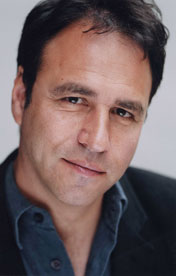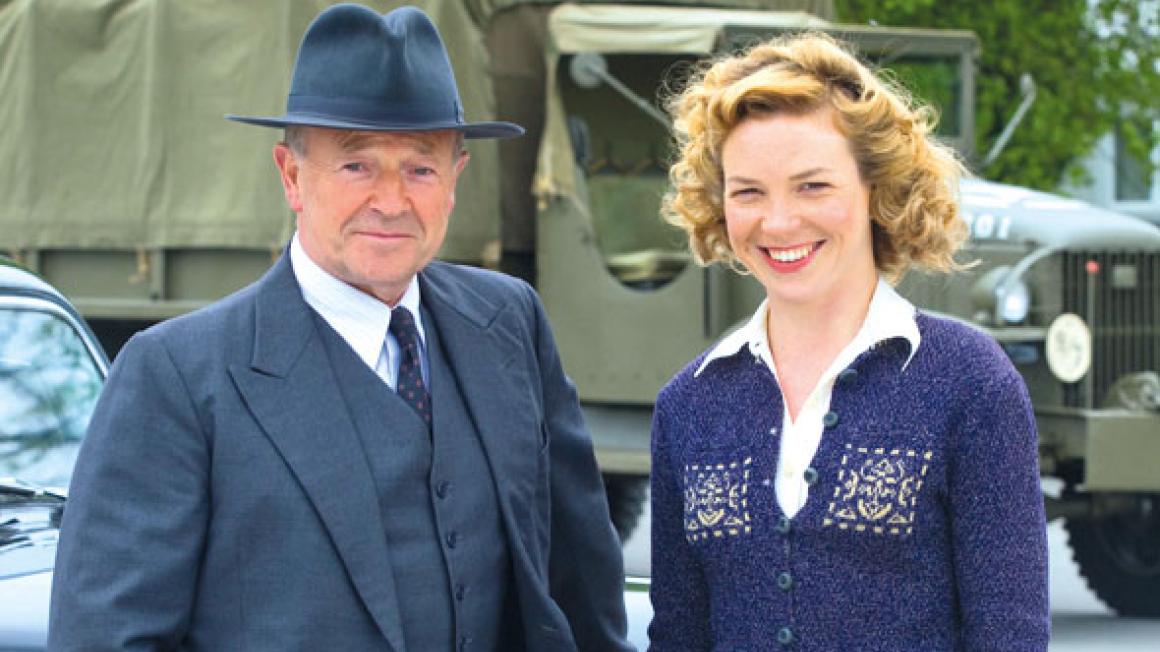How I went to war with Foyle

Right now I find myself writing all three scripts for the new series, which starts shooting in February. That’s the equivalent of three feature-length films, completed in the space of just six months… and I’m tired!
I did intend to stop at the end of the last season. We’d gone from World War to Cold War, from the cliffs and seagulls of Hastings to the grimy alleyways of London, from dead bodies in libraries to spies and traitors… a sea change in every sense. It’s very rare for a television series to transform itself quite so completely, but suddenly I found myself in a new world, writing for a new cast of characters including the brilliant Ellie Haddington as our very own M (loosely based on Vera Atkins, the redoubtable head of recruitment for F Section at the Special Operations Executive), and Tim McMullan, the world’s shiftiest secret agent.
The period immediately after the war is a fascinating one – and one that television has largely ignored. It’s hard to convey the sense of disappointment and anti-climax that came with victory.
‘We won the war but lost everything else,’ one of my characters says. There were food shortages and housing shortages – three-quarters of a million homes had been destroyed in the bombing. A new Labour government had been voted in to tackle Beveridge’s five ‘giant evils’ – want, disease, ignorance, squalor, idleness – but disillusionment had quickly followed. Divorce rates were soaring, with women grudgingly being removed from work and sent home to husbands they had almost forgotten. Demobilisation was slow and chaotic; there were almost mutinies in RAF stations in India and Ceylon. The country was ill prepared for the hideously cold winter that swept in at the end of 1946. One of the challenges I have writing the series these days is making sure it isn’t too depressing!
My screenplays are very different now. This year, our three arenas are probably our most challenging yet. We are sending Foyle to Nuremberg. My interest is not the most infamous Nazis but the industrialists who followed them into the dock, particularly the IG Farben trials. The way that big businesses (including IBM , Shell and Standard Oil) supported Hitler is one of those stories that we love on Foyle’s War… shocking but relatively unknown.
Next, we are imagining a terrorist attack on the London Conference, which took place in autumn 1946 and which was convened to discuss the increasingly fraught situation in Palestine: the King David Hotel in Jerusalem had been bombed with the loss of 91 lives just a few months before. Again, this episode is based on a true story. A Zionist agent from France – a woman – did leave a bomb in the Foreign Office around that time but fortunately it failed to go off. Finally, we examine the role of the Special Operations Executive, an organisation that has always fascinated me. The life expectancy of an SOE agent during the war was said to be six weeks but recent documents have come to light suggesting that many of those lives were needlessly wasted.
The challenges of filming, particularly given such different landscapes, are huge. I have just written the opening scene of Episode Two. A couple of squaddies, driving a jeep across a desert near Jerusalem, are ambushed and killed by members of the terrorist group the Irgun – another true event. However, we’ll be shooting in the middle of Liverpool in winter. Quite how our director, Stuart Orme, will achieve this is beyond me and fortunately it’s not my problem. But last year I gave him an opening sequence set in the Jornada del Muerto desert in New Mexico, the first detonation of an atomic bomb. He filmed it magnificently in three hours on Dublin beach, carrying the set (an atomic bunker) on two lorries, assembling it and shooting just before the tide came in. We are also shooting scenes at the concentration camp of Monowitz, originally built with the full co-operation of IG Farben to provide slave labour for their synthetic fuel programme. The original camp has been razed so we’ll probably have to build our own. We really are trying to create feature films, sadly without the budget to match.
It is almost impossible to shoot in London – not just for cost reasons but because it’s so hard to find streets without too many modern interruptions. Dublin was perfect, allowing us to film 360-degree angles whilst keeping everything completely authentic. OK – last year we accidentally allowed a Routemaster bus to pass through one shot 10 years before it was introduced. The Sunday Times must have published a dozen letters on the subject, which was pretty galling after all our hard work. Somebody, somewhere, made a wrong decision. Get over it!
This year we’re moving to Liverpool, which will give us a wealth of period detail – the BBC ’s Peaky Blinders was also shot there. It’s fun to think that with a little bit of help from our art department, the city will be doubling as Jerusalem, Nuremberg, Paris, Southampton, Devizes and, of course, London.
Why has Foyle’s War been so successful and lasted so long? I’d like to say that it’s the quality of the writing but the truth, I’m afraid, is probably more to do with Michael Kitchen’s central performance – and his relationship with Honeysuckle Weeks, who has become a star in her own right as his long-standing driver, Sam. Michael was our first and only choice for the part of Foyle when we first conceived it and has carefully developed the character over the years. This year (and this is exclusive to The Lady) you can see a much more personal story developing around Christopher Foyle. A love interest? I wouldn’t go quite that far… and anyway, my lips are sealed.
So three scripts, two drafts and then I’m heading for the sun. My work is done and if an anachronistic vehicle happens to rumble through a shot, please don’t tell me. It’s not my fault!


